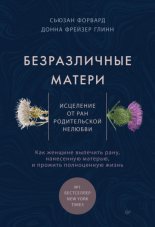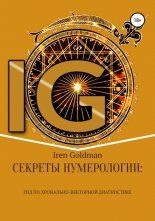Стамбул. Сказка о трех городах Хьюз Беттани

Temperley, H. (1936) England and the Near East. London: Longmans, Green.
Tepper Y. and Di Segni, L. (2006) A Christian Prayer Hall of the Third Century CE at Kefar ‘Othnay (Legio). Excavations at the Megiddo Prison 2005. Jerusalem: Israel Antiquities Authority.
Terakye, G. and Oflaz, F. (2007) ‘A Historical Overview of Psychiatric Mental Health Nursing in Turkey’, International Journal of Mental Health, 36.3: 73–83.
Theodossiou, E., Manimanis, V. and Dimitrijevic, M. S. (2012) ‘Astrology in the Early Byzantine Empire and the Anti-Astrology Stance of the Church Fathers’, European Journal of Science and Theology 8.2: 7–24.
Thierry, F. and Morrisson, C. (1994) ‘Sur les monnaies byzantines trouves en Chine’, Revue Numismatique, 6th series, 36: 109–145.
Thomas, D. and Mallett, A. (2010) Christian – Muslim Relations: A Bibliographical History, vol. 2: 900–1050. Leiden: Brill.
Thomas, J. P. and Hero, A. C. (2000) Byzantine Monastic Foundation Documents, 5 vols. Washington, DC: Dumbarton Oaks Research Library and Collection.
Thomov, T. (2014) ‘Four Scandinavian Ship Graffiti from Hagia Sophia’, Byzantine and Modern Greek Studies 38.2: 168–184.
Timbs, J. (1839) (ed.) The Literary World: A Journal of Popular Information and Entertainment, vol. 1. London: G. Berger.
Tolan, J., Veinstein, G. and Laurens, H. (2013) Europe and the Islamic World: A History. Princeton: Princeton University Press.
Tolkien, J. R. R. (2012), The Lord of the Rings: The Return of the King. London: HarperCollins.
Tolstoy, L. (2001). ‘The Wod-Felling’ in Collected Shorter Fiction, vol. 1., trans. A. Maude, L. Maude and N. Cooper. New York and Toronto: Alfred A. Knopf.
Toner, J. (2013) Homer’s Turk: How Classics Shaped Ideas of the East. Cambridge, MA and London: Harvard University Press.
Topinka, R. J. (2009) ‘Islam, England, and Identity in the Early Modern Period: A Review of Recent Scholarship’, Mediterranean Studies 18: 114–130.
Tougher, S. (ed.) (2002) Eunuchs in Antiquity and Beyond. London: The Classical Press of Wales and Duckworth.
Toynbee, J. M. C. (1934) The Hadrianic School: A Chapter in the History of Greek Art. Cambridge: Cambridge University Press.
Tracy, J. D. (2002) Emperor Charles V: Impresario of War, Campaign Strategy, International Finance, and Domestic Politics. Cambridge: Cambridge University Press.
Treadgold, W. (1988) The Byzantine Revival, 780–842. Stanford: Stanford University Press.
Treadgold, W. (1997) A History of the Byzantine State and Society. Stanford: Stanford University Press.
Troianos, S. N. (2011) ‘Christians and Jews in Byzantium: A Love – Hate Relationship’, in R. Bonfil, O. Irshai, G. G. Stroumsa and R. Talgam (eds) Jews in Byzantium: Dialectics of Minority and Majority Cultures. Leiden: Brill, 133–148.
Tsetskhladze, G. R. (ed.) (1998) The Greek Colonisation of the Black Sea Area. Stuttgart: Franz Steiner Verlag.
Turchini, A. (1992) Rimini Medievale. Contributi per la storia della citt. Rimini: Bruno Chigi Editore.
Turnbull, S. (2004) The Walls of Constantinople AD 324–1453. Oxford: Osprey Publishing.
Tursun Bey (1978) The History of Mehmet the Conqueror, trans. H. nalck and R. Murphey. Minneapolis: Bibliotheca Islamica.
Turton, G. (1974) The Syrian Princesses: The Women Who Ruled Rome A.D. 193–235. London: Cassell.
Twain, M. (1867) From Innocents Abroad, written on the occasion of the Exposition Universelle. Access online via Project Gutenburg.
Tyerman, C. (2006) God’s War: A New History of the Crusades. London: Allen Lane.
Uslu, G. (2009) ‘Ottoman Appreciation of Trojan Heritage 1870–1875’, in Tijdschrift voor Mediterrane Archeologie 21.41: 4–10.
Vallois, H. V. (1937) Note sur les ossements humains de la ncropole nolithique de Byblos (avec 2 planches). Vol. 1. Bulletin of the Museum of Beirut.
Van Millingen, A. (1899) Byzantine Constantinople: The Walls of the City and Adjoining Historical Sites. London: John Murray.
Van Millingen, A. (1912) Byzantine Churches in Constantinople: Their History and Architecture. London: Hesperides Press.
Varvounis, M. (2012) Jan Sobieski: The King Who Saved Europe. Bloomington, IN: Xlibris.
Vasiliev, A. A. (1984) History of the Byzantine Empire 324–1453, vol. 1. Madison, WI: University of Wisconsin Press.
Vassilaki, M. (ed.) (2005) Images of the Mother of God: Perceptions of the Theotokos in Byzantium. Farnham: Ashgate.
Verlinde, A. (2012) ‘The Temple Complex of Pessinus: Archaeological Research on the Function, Morphology and Chronology of a Sanctuary in Asia Minor’, doctoral thesis, Ghent University.
Via Egnatia Foundation (2010) Via Egnatia Revisited: Common Past, Common Future: Proceedings VEF Conference, Bitola, February 2009. Driebergen: Via Egnatia Foundation.
Villehardouin, G. de (1963), ‘The Conquest of Constantinople’, in Jean de Joinville and Geoffrey de Villehardouin, The Chronicles of the Crusades, trans. M. R. B. Shaw. London: Penguin.
Vitkus, D. J. (1997) ‘Turning Turk in Othello: The Conversion and Damnation of the Moor’, Shakespeare Quarterly 48.2: 145–176.
Vlami, D. (2015) Trading with the Ottomans: The Levant Company in the Middle East. London: I. B. Tauris.
Von Hammer (1878) History of the Ottoman Turks, ed. E. S. Creasy. London: Richard Bentley.
von Sanders, O. L. (1927) Five Years in Turkey, trans. C. Reichmann. Annapolis: United States Naval Institute.
Wade Labarge, M. (2001) Women in Medieval Life. London: Penguin.
Wagner, M. (1856). Travels in Persia, Georgia and Koordistan with sketches of the Cossacks and the Caucasus. London: Hurst and Blackett Publishers. Digitised by Google.
Waksman, Y. (2008-2009) ‘Istanbul Ceramic Workshops Project: First Laboratory Study of a Constantinopolitan Production of Byzantine Ceramics’, Dumbarton Oaks Project Grants Reports. http://www.doaks.org/research/byzantine/project-grant-reports/2008-2009/waksman [date accessed: 19/01/2016].
Walker, P. (2002) Exploring an Islamic Empire: Fatimad and Islamic and its Sources. London: I. B Tauris.
Walmsley, A. (2007) Early Islamic Syria: An Archaeological Assessment. London: Duckworth.
Ware Allen, B. (2015) The Great Siege of Malta: Battle between the Ottomans and the Knights of St John. Lebanon, NH: University Press of New England.
Wasti, S. T. (2004) ‘The 1912–13 Balkan Wars and the Siege of Edirne’, Middle Eastern Studies 40.4: 59–78.
Wasti, S. T. (2005) ‘The Ottoman Ceremony of the Royal Purse’, Middle Eastern Studies 41.2: 193–200.
Watt, M. (1982) The Influence of Islam on Medieval Europe. Edinburgh: Edinburgh University Press.
Watt, M. (1988) Muhammad’s Mecca: A History in the Qur’an. Edinburgh: Edinburgh University Press.
Watts, E. (2004) ‘Justinian, Malalas, and the End of Athenian Philosophical Teaching in A.D. 529’, Journal of Roman Studies 94: 168–182.
Webb, M. (2001) The Churches and Catacombs of Early Christian Rome: A Comprehensive Guide. Brighton: Sussex Academic Press.
Webb, R. (2008) Demons and Dancers: Performance in Late Antiquity. Cambridge, MA: Harvard University Press.
Weeda, L. (2015) Virgil’s Political Commentary: In the Eclogues, Georgics and Aeneid. Berlin: De Gruyter.
Weitzmann, K. (1960) ‘The Survival of Mythological Representations in Early Christian and Byzantine Art and their Impact on Christian Iconography’, Dumbarton Oaks Papers 14: 43–45–68.
Welch, S. C., Jenkins, M. and Kane, C. (1984) ‘Islamic Art’, Notable Acquisitions 1983–1984. New York: Metropolitan Museum of Art, 4–8.
Wellesz, E. (ed.) (1957) The New Oxford History of Music, vol. 1: Ancient and Oriental Music. Oxford: Oxford University Press.
Wells, C. (2007) Sailing from Byzantium: How a Lost Empire Shaped the World. New York: Delta Trade.
Wells, P. S. (2009) Barbarians to Angels: The Dark Ages Reconsidered. New York and London: W. W. Norton.
West, M. L. (2005) ‘“Odyssey” and “Argonautica”’, Classical Quarterly 55.1: 39–64.
Whalen, B. (2007) ‘Rethinking the Schism of 1054: Authority, Heresy, and the Latin Rite’, Traditio 62: 1–24.
Wharton, A. (2015) The Architects of Ottoman Constantinople: The Baylan Family and the History of Ottoman Architecture. London: I. B. Tauris.
Wheatcroft, A. (1993) The Ottomans. London: Viking.
Wheatcroft, A. (2008) The Enemy at the Gate: Habsburgs, Ottomans and the Battle for Europe. London: Random House.
Wheeler, E. L. (2011) ‘The Army and the Limes in the East’, in P. Erdkamp (ed.) A Companion to the Roman Army. Chichester: Wiley-Blackwell, 235–266.
White, M. (2013) Military Saints in Byzantium and Rus, 900–1200. Cambridge: Cambridge University Press.
White, S. (2011) The Climate of Rebellion in the Early Modern Ottoman Empire. Cambridge: Cambridge University Press.
Whitley, J. et al. (2007) ‘Archaeology in Greece 2006–2007’, Archaeological Reports 53: 1–121.
Wickham, C. (2005) ‘The Developmnt of Villages in the West, 300–900’, in J. Lefort, C. Morrisson and J.-P. Sodini (eds) Les Villages dans l’Empire byzantin (IVe – XVe sicle). Paris: Lethielleux, 54–70.
Wickham, C. (2009) The Inheritance of Rome: A History of Europe from 400 to 1000. London: Allen Lane.
Wiechmann, I. and Grupe, G. (2005) ‘Detection of Yersinia pestis DNA in Two Early Medieval Skeletal Finds from Aschheim (Upper Bavaria, 6th Century AD)’, American Journal of Physical Anthropology 126: 48–55.
Wilson, A. I. (1999) ‘Commerce and Industry in Roman Sabratha’, Libstud 30: 29–52.
Wilson, M. (2012) Biblical Turkey: A Guide to the Jewish and Christian Sites of Asia Minor. Istanbul: Ege Yaynlar.
Wilson, N. (ed.) (2009) Encyclopaedia of Ancient Greece. London: Routledge.
Wilson, N. G. (1967) ‘The Libraries of the Byzantine World’, Greek, Roman and Byzantine Studies 8: 53–80.
Wilson, N. G. (1992) From Byzantium to Italy: Greek Studies in the Italian Renaissance. London: Duckworth.
Wilson, P. H. (2016) The Holy Roman Empire: A Thousand Years of Europe’s History. London: Penguin.
Winroth, A. (2004) The Age of the Vikings. Princeton: Princeton University Press.
Wood, I. (2003) ‘Before and after the Migration to Britain’, in J. Hines (ed.) The Anglo-Saxons from the Migration Period to the Eighth Century: An Ethnographic Perspective. Woodbridge: The Boydell Press, 41–64.
Woods, D. (1997) ‘Where Did Constantine I Die?’, Journal of Theological Studies 48.2: 531–5.
Woods, D. (1998) ‘On the Death of the Empress Fausta’, Greece and Rome 45.1: 70–86.
Woolf, L. (1917) The Future of Constantinople. London: Allen & Unwin.
Worthington, I. (2008) Philip II of Macedonia. New Haven and London: Yale University Press.
Wren, M. C. and Stults, T. (1994) The Course of Russian History. Eugene, OR: Wipf & Stock.
Wright, D. H. (1987) ‘The True Face of Constantine the Great’, Dumbarton Oaks Papers 41: 493–507.
Wright, G. R. H. (1968) ‘Simeon’s Ancestors (or the Skeleton on the Column)’, Australian Journal of Biblical Archaeology 1.1: 41–49.
Wright, L. (2006) The Looming Tower: Al Qaeda’s Road to 9/11. London: Allen Lane.
Yeats, W. B. (1933) ‘Byzantium’ from Finneran, R. J. (ed.) The Poems of W. B. Yeats: A New Edition. London: Macmillan.
Yildirim, O. (2007) ‘The Battle of Lepanto and its Impact on Ottoman History and Historiography’, in R. Cancila (ed.) Mediterraneo in Armi. Palermo: Quaderni di Mediterranea.
Yildirim, . and Karaka, G. (2006) Edirne Museums and Sites. Istanbul: Yap Kredi Yaynlar.
Yilmaz, F. (2015) A Former Ottoman Officer among the ANZACs: Dr. Charles Snodgrass Ryan. Istanbul: Baheehir University Press.
Ylmaz, G. (2011) ‘The Economic and Social Roles of Janissaries in a 17th Century Ottoman City: The Case of Istanbul’, doctoral thesis, McGill University, Montreal. digitool.library.mcgill.ca/thesisfile104500.pdf [date accessed 28.01.16].
Yotov, V. (2008) ‘The Vikings on the Balkans (10th–11th Centuries): Strategic and Tactical Changes: New Archaeological Data on the Weaponry’, Archaeologia Baltica 8: 321–327.
Ycel, E. (2010) Great Palace Mosaic Museum, trans. A. Sheridan and M. D. Sheridan. Istanbul: Bilkent Kultur Girisimi Publications.
Zachariadou, E. (1970) ‘The Conquest of Adrianople by the Turks’, Studii Veneziani 12: 211–17.
Zampaki, T. (2012) ‘The Mediterranean Muslim Navy and the Expeditions Dispatched against Constantinople’, ICHSS 2012 Proceedings 8: 9–17.
Zarinebaf, F. (2010) Crime and Punishment in Istanbul 1700–1800. Berkeley and Los Angeles: University of California Press.
Zarinebaf, F. (2012) ‘Intercommunal Life in Istanbul during the Eighteenth Century’, Review of Middle East Studies 46.1: 79–85.
Zens, R. (2015) ‘Some Approaches to the Ottoman Empire as Part of a World History Curriculum’, World History Connected 10.3. http://worldhistoryconnected.press.illinois.edu/10.3/zens.html
Zhukov, K. and Vitol, A. (2001) ‘The Origins of the Ottoman Submarine Fleet’, Oriente Moderno 20(81).1: 221–32.
Zim, R. (2009) ‘Writing Behind Bars: Literary Contexts and the Authority of Carceral Experience’, Huntington Library Quarterly 72.2: 291–311.
Zuckerman, C. (2005) ‘Learning from the Enemy and More: Studies in “Dark Centuries” Byzantium’, Millennium 2: 79–135.
catalogues and guides
Portraits from the Empire: The Ottoman World and the Ottomans from the 18th to the 20th Century with Selected Works of Art from the Suna and Inan Kira Foundation Collection (2005), exhibition catalogue. Istanbul: Pera Museum Publication 1.
Nea Moni on Chios, educational programme. Ministry of Culture, Department of Byzantine and Post-Byzantine Monuments, Byzantine Museums Section, 3rd Ephorate of Byzantine Antiquities, UNESCO.
Buckton, D. et al. (1984) The Treasury of San Marco, catalogue of the exhibition at the Metropolitan Museum of Art, New York. Milan: Olivetti.
Buckton, D. (ed.) (1994) Byzantium: Treasures of Byzantine Art and Culture from British Collections, exhibition catalogue. London: British Museum Press.
Drandaki, A., Papanikola-Bakirtzi, D. and Tourta, A. (eds) (2013) Heaven & Earth: Art of Byzantium from Greek Collections, exhibition catalogue. Athens: Hellenic Ministry of Culture and Sports and the Benaki Museum.
Evans, H. C. and Ratliff, B. (eds) (2012) Byzantium and Islam: Age of Transition, exhibition catalogue. New Haven and London: Yale University Press.
Hartley, E., Hawkes, J., Henig, M. and Mee, F. (eds) (2006) Constantine the Great: York’s Roman Emperor, exhibition catalogue. York and Aldershot: York Museums and Gallery Trust, with Lund Humphries.
Makariou, S. (ed.) (2012) Islamic Art at the Muse du Louvre, exhibition catalogue. Paris: Hazan.
Moysidou, J. (ed.) (2010) Byzantine Museum: The Permanent Exhibition, exhibition catalogue. Athens: Byzantine and Christian Museum, Ministry of Culture and Tourism.
Istanbul: 8000 Years Brought to Daylight: Marmaray, Metro, Sultanahmet Excavations (2007), excavation catalogue. Istanbul: Vehbi Ko Foundation.
Institut du Monde Arabe (2012) Les Mille et Une Nuits, exhibition catalogue, ed. E. Bouffard and A.-A. Joyard. Paris: Hazan.
Constantino 313 D.C (2013), exhibition catalogue. Ministero per i Beni e le Attivit Culturali, Soprintendenza Speciale per i Beni Archaeologici di Roma. Milano: Mondadori Electa S.p.A.
Baker, E. M. and Finkel, A. (n.d.) A History of the Sultanahmet Prison, catalogue. Istanbul: The Four Seasons Hotel.
Ballain, A. (ed.) (2011) Relics of the Past: Treasures of the Greek Orthodox Church and the Population Exchange: The Benaki Museum Collections, exhibition catalogue. Milan: 5 Continent Editions.
Bursa City Guide (2012). Bursa: Bursa Special Provincial Administration.
Ortalli, J. (2007) The Surgeon’s House and the Piazza Ferrari Excavations, excavation catalogue, trans. John Denton. Rimini: Comune di Rimini.
Sacred, exhibition guide, British Library, London, 27 April–23 September 2007. London: British Library Publishing.
Byzantium 330–1453, Royal Academy of Arts, London, 25 October 2008–22 March 2009. ed. R Cormack and M. Vassilaki. London: Royal Academy of Arts.
Karliga, B. (n.d.) MEDAM: Bahcesehir University Civilisation Studies Center, institution guide.
Kourkoutidou-Nikoladou, E. and Nalpandis, D. (2000) Museum of Byzantine Culture, Thessaloniki, gallery guide, trans. D. Hady. Athens: Hellenic Ministry of Culture.
Paissidou, M. (n.d.) Ephoreia of Byzantine Antiquities of Thessaloniki: Byzantine Churches of Thessaloniki, gallery guide, trans. D. Whitehouse and J. Lillie. Athens: Hellenic Ministry of Culture.
Paissidou, M. (n.d.) Monuments of the Ottoman Period of Thessaloniki, gallery guide, trans. D. Whitehouse and J. Lillie. Athens: Hellenic Ministry of Culture.
Ballain, A. (ed.) (2006) Benaki Museum: A Guide to the Museum of Islamic Art, trans. J. Avgherinos. Athens: Benaki Museum.
Delivorrias, A. (2000) A Guide to the Benaki Museum, trans. A. Doumas. Athens: Benaki Museum.
Konstantios, D. (gen. ed.) (2010) Byzantine and Christian Museum: Byzantine Collections: The Permanent Exhibition, exhibition guide. Athens: Hellenic Ministry of Culture.
The Piri Reis World Map of 1513 (14 June 2013, University of Greenwich), conference brochure.
York Minster: A Short Guide (2012). York: York Minster and Jigsaw Design and Publishing.
Walking with the Romans: Daily Life in Eboracum: A Walking Trail (2012). York: York Museums Trust, History Works.
Experiencing the Great War: York in World War One: A Walking Trail (2012). York: York Museum Trust, History Works.
Suleyman the Magnificent: An Exhibition at the British Museum, exhibition guide, 18 January–30 May 1988, British Museum, London
*Parliamentary Papers* Accounts and Papers: Thirty-Six Volumes: Eastern Papers (1854), Session 31 January–12 August 1854, vol. 71. London: Harrison & Son.
newspapers, magazine articles and websites
AFP, ‘UNESCO to display ancient artifacts recovered from thieves’, 19.06.2012. http://www.rawstory.com/2012/06/unesco-to-display-ancient-artifacts-recovered-from-thieves/
Birand, M. A. ‘The shame of Sept. 6–7 is always with us’, Hurriyet: Turkish Daily News 09.07.2015.
Bolton, M. ‘Tales of Sarajevo’, Lonely Planet June 2010.
Campbell, M. ‘What Now for the Young Turks?’, Sunday Times 09.06.2013.
Campbell, M. ‘Knights of the Radar Sally Forth in Search of Cervantes’s Bones’, Sunday Times 16.03.2014.
Covington, R. ‘Uncovering Yenikapi’, Saudi Aramco World 60.1 January/February 2009. www.saudiaramcoworld.com/issue/200901/uncovering.yenikapi.htm [accessed 20.06.2013].
Curry, A. ‘The First Vikings’, Archaeology 10.06.2013. http://www.archaeology.org/issues/95-1307/features/941-vikings-saaremaa-estonia-salme-vendel-oseberg [accessed 29.01.2014].
Dalrymple, W. ‘England’s Mustaphas’, Guardian 20.03.1999.
Dalrymple, W. ‘Art Treasures of the Mughal Empire’, Guardian 30.11.2012.
Darwent, C. ‘Swept Away by an Old Greek Perspective’, Independent on Sunday 13.05.2012.
de Bellaigue, C. ‘Turkey’s Hidden Past’, New York Review 08.03.2001.
de Bellaigue, C. ‘Turkish Epitaph’, Saturday Guardian 26.10.2013.
de Lange, N., Panayotov, A. and Rees, G. (2013) ‘Mapping the Jewish Communities of the Byzantine Empire’. www.byzantinejewry.net [accessed 18.01.2016].
‘Democrat or Sultan?’, Economist 08.06.2013.
Emin, E. ‘Someone to Watch Over Me’, Guardian 08.11.2013 (photographer).
Furtado, P. ‘York’s Roman Emperor’, History Today 56.3, March 2006.
Gamm, N. ‘Women in Ottoman Society’, Hurriyet Daily News 10.03.2012. http://www.hurriyetdailynews.com/women-in-ottoman-society-.aspx?pageID=238&nID=15651&NewsCatID=438 [accessed 19.01.2016].
Gordon, R. ‘Battle of Chalons: Attila the Hun Versus Flavius Aetius’, Military History December 2013.
Holland, C. ‘Jihad by Sea’ 10.08.2010. http://www.historynet.com/jihad-by-sea.htm [accessed 07.10.2014].
Irwin, R. ‘Muslim Responses to the Crusades’, History Today 47.4, April 1997.
Jgo, M. ‘Sainte-Sophie menace’, Le Monde 22.08.2015.
Judah, T. Numerous reports for The Times 1992–3.
Kelly, C. ‘Barbarians at the gate’, Omnibus 63: 30–2. http://www.theclassicslibrary.com/JACT/O63%20Kelly.pdf
Kelly, C. ‘Constantine: Britain’s Roman Emperor’, History Today 56.7, July 2006.
Kennedy, F. ‘Dig uncovers Vandal fleet’, Independent 11.02.2001. http://www.independent.co.uk/news/world/europe/dig-uncovers-vandal-fleet-5365629.html.
Last Statues of Antiquity Database, LSA-27 (2012) University of Oxford. http://laststatues.classics.ox.ac.uk/database/discussion.php?id=399
McCall, C. ‘The Great Palace of Constantinople: Discovering the Mosaic Magic of Early Byzantine Rulers’, Current World Archaeology 67, October 2014.
Pascal, J. ‘A People Killed Twice’, Guardian 27.01.2001.
Rule, V. ‘Arabian Nights’, Guardian 09.12.2000.
Sayfa, A. ‘The shame of Sept. 6–7 is always with us’, Hurriyet Daily News 13.06.2013.
Shafak, E. ‘Someone to Watch Over Me’, Guardian 08.11.2013.
Stone, N. ‘The Last Crusades: The Hundred Year Battle for the Centre of the World’, Guardian 22.08.2009.
Stone, N. ‘What’s eating Turkey’, Spectator 08.06.2013.
Stone, N. ‘Dancing to a New Dawn in Turkey’s Velvet Revolution’, Daily Telegraph 08.06.2013.
Stone, N. ‘Erdogan’s dreams of empire are perilous for his country’, Guardian 07.12.2015.
Turgut, P. ‘Constantinople’s Gypsies Not Welcome in Istanbul’, Time 09.06.2008. http://content.time.com/time/world/article/0,8599,1812905,00.html.
‘Turkey Debates Making Museum into a Mosque’, The Times 18.11.2013.
UNESCO World Heritage (2005) Diocletian’s Palace and the Historical Nucleus of Split. http://whc.unesco.org/en/list/97
UNESCO World Heritage Ancient City of Damascus. http://whc.unesco.org/en/list/20
Whitehouse, D. ‘Space impact “saved Christianity”’, BBC News Online 23.06.2003. http://news.bbc.co.uk/1/hi/sci/tech/3013146.stm [accessed 21.06.2013].
Вклейка
Неолитический отпечаток с недавних раскопок в Еникапы. На сегодняшний день более тысячи таких доисторических следов было найдено в центре Стамбула и его окрестностях, которые когда-то были болотами. До возникновения Босфора по берегам рек здесь жили крупные общины.
Водные пути, которые окружают Стамбул, богаты рыбой. На протяжении всей истории города жители этим очень гордились. Стамбульцы все еще ловят рыбу каждый день с Галатского моста и берегов Босфора. Это изображение рыбаков Константинополя было нарисовано на Сицилии в двенадцатом веке в Кодексе Скилицы, который охватывает правление византийских императоров с 811 по 1057 год нашей эры.
Редкое изображение императора Септимия Севера – роспись по дереву. Здесь показаны его жена – Юлия Домна и их дети – Каракалла и Гета (лицо Геты было стерто). И Септимий, и Каракалла проводили в Византии обширные строительные работы, в том числе возведение Милиона, от которого измерялись все расстояния в Римской империи.
Христос изображен как бог Солнца Гелиос: раннехристианская (конец третьего века нашей эры) мозаика с отолочного свода мавзолея Юлия, расположенного ниже собора Святого Петра. Император Константин, по-видимому, поощрял слияние Христа с Sol Invictus – Непобедимым Солнцем.
Константинополь часто изображали как богиню Афродиту. В составе Эсквилинских сокровищ, созданных около 380 года н. э. и обнаруженных на Эсквилинском холме Рима, она присоединяется к другим крупным городам поздней Римской империи (Рим, Антиохия и Александрия) в качестве Тюхэ, покровительствующего божества города. Тюхэ была дочерью Афродиты и Зевса. Она несет рог изобилия, символ щедрости.
На иллюстрации изображено ободранное тело Юлиана Отступника, «Падение принцев» Джона Лидгейта. Автор, вероятно, перепутал Юлиана с императором Валерианом, которого постигла такая участь, – это напоминание о запутанной паутине, которую мы должны разгадать при изучении средневековых источников.
Карта Пютингера, копия карты XIII века, впервые заказанная при Августе и первоначально созданная около 300–500 гг. н. э., которая описывает римские дорожные системы, включая Виа Эгнатия, или Эгнатианский путь, который проходил от албанского края Адриатического моря до Византии. Константинополь представлен как Афродита.
Мозаичное изображение императора Юстиниана в базилике Сан-Витале, Равенна. Строительство церкви началось, когда Равенна все еще находилась под властью готики, а мозаика была завершена в 548 году н. э., когда Юстиниан отвоевал многие римские земли.
«Картина шести царей», ранняя исламская фреска из Каср Амра, замковый комплекс Омейядов, датируемый началом восьмого века нашей эры. Четыре из шести царей все еще могут быть идентифицированы, в том числе неизвестный византийский император (крайний слева, в синем узорчатом одеянии), чье лицо было утрачено.
Ожерелье Десборо было собственностью богатой англосаксонской женщины в седьмом веке нашей эры и было поразительно похоже на драгоценности, которые носила Теодора на мозаике Сан-Витале.
Мозаики из Большого дворца, скрытые под Голубой мечетью с 1606 года нашей эры и вновь найденные в 1930-х и 1950-х годах, включают в себя самые изысканные детали. Здесь дети катаются на верблюдах (сверху), а Константинополь изображен в виде атакованного орла (снизу).
Картина Лоры Лушингтон – синагога в Стамбуле – основана на гравюре 1848 года. Еврейские общины процветали в Стамбуле не менее 1600 лет.
Византийцы уничтожали арабские флоты своим секретным оружием. Греческий огонь – также известный как морской огонь или римский огонь – имеет свое первое зарегистрированное использование в 515 году нашей эры. Иллюстрация из Кодекса Скилицы.
Погребальный саван Карла Великого, который предпочел быть похороненным в пурпурно-окрашенной ткани, украшенной золотой нитью, изготовленной в Константинополе. Карл Великий был коронован императором Священной Римской империи в 800 году и умер в 814 году.
Икона с Крита, написанная около 1500 года нашей эры в честь торжеств, которые ознаменовали конец византийского иконоборчества 843 года нашей эры. Огромные иконы Марии регулярно выставлялись напоказ вокруг Константинополя. Обратите внимание на сходство в композиции иконы с хеттской богиней солнца и ее ребенком.
Студийский монастырь Святого Иоанна, основанный в 462 году н. э., спонсировал философские дебаты и сохранение текстов в скриптории. Это изображение из Кодекса Скилицы философской школы в Константинополе.
Деталь из пала Д'Оро, которая сейчас находится в базилике Сан-Марко в Венеции, изображает Христа Пантократора. Алтарь был построен в Константинополе и Венеции в течение четырех столетий с 976 по 1345 год н. э. и является одним из самых великолепных сохранившихся образцов византийской эмали.
Осада Константинополя османскими войсками в 1453 году н. э., иллюстрация из рассказа Жана Шартье.
Портрет «сидящего писца» Джованни Беллини – возможно, изображение молодого Мехмеда Завоевателя, – созданный в 1479–1481 годах н. э.
Миниатюра Стамбула, Матракчи Насух, боснийский Эрудит, привезенный в Стамбул из Румелии, который показывает зонирование города в шестнадцатом веке и жизнь водных путей, окружающих его. Художник закончил обучение в школе янычара Эндеруна.
Османские войска осаждают Вену в 1529 году н. э., Хюнернаме, «Книга подвигов», выпущенная в Стамбуле. Целый том рукописи, насчитывающий более 500 страниц, посвящен османским военным походам.
Али-паша изображен в неизвестной немецкой газете 1571 года н. э. Он возглавил турецкий флот в битве при Лепанто и был схвачен на османском флагмане (показан на заднем плане) и обезглавлен.
Османская акварель семнадцатого века, иллюстрирующая праздник султана Валиде с присутствием мадам Жирарден из французского посольства в Константинополе. Главный черный евнух стоит слева.






